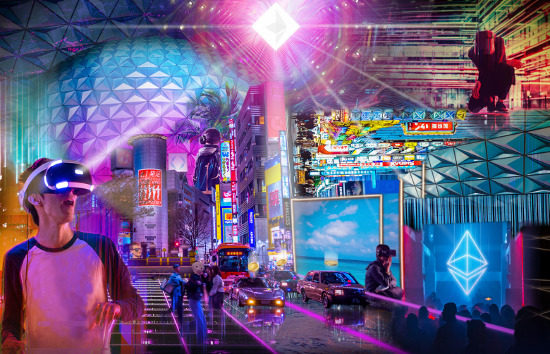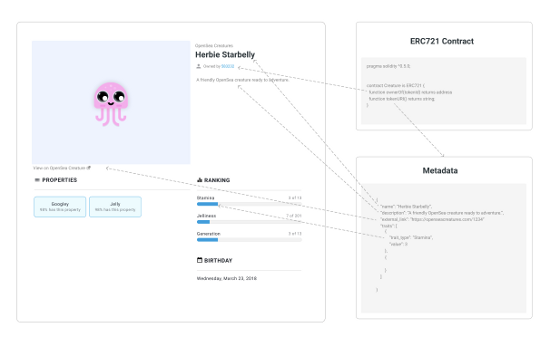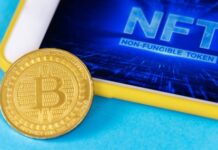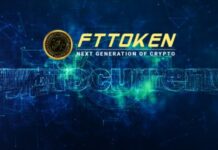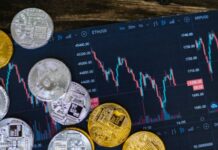Why did everyone start making their worlds?
In 2022, virtual reality will move well beyond gaming. The epidemic has altered the normal flow of events. And its finish is unknown. Many organizations have moved to remote work, resulting in unoccupied offices and lower real estate prices. But one thing is clear: we will not revert to our old ways. Thus, corporations and investors have focused on a new digital world. Actual estate and land in the metaverses are increasing faster than in the real world. Digital property values surged 3,000% in the first half of 2021. Also, the remarks of tech titans inspire a new virtual future. Central and has already revealed ambitions to build a metaverse in 2022. Twitter and YouTube have begun to understand web3.0 and NFT technology. Like previous companies, Facebook has metamorphosed into Meta. In these worlds, everyone has digital property and may work in the virtual world and earn real money. According to recent news reports, more and more corporations are setting up shop in these metaverses.
According to Grayscale, the total income from virtual gaming worlds might reach $400 billion by 2025. The metaverse market is expected to expand from $43.4 billion in 2020 to $814.2 billion in 2028.
Companies still generate money through advertising and produce actual value in digital environments. Fortnite has events happening. Advertisers get their virtual world. And the creative option lets you customize clothing, game scenarios, and even entire in-game universes. Balenciaga has introduced new Fortnite character outfits. Coca-Cola teamed up with Tafi to produce an NFT line that includes a “wearable” jacket in Decentraland. For its 100th anniversary, Gucci has created a virtual exhibition called Gucci Garden on Roblox.
Next?
This is globalization 2.0, the merging of virtual and physical economies. This will soon alter the globe. Virtual fashion displays and rock concerts will draw billions of spectators. Companies can build offices in a metaverse busier than Moscow’s busiest streets. In the future, we will exclusively work on real-world projects and products. Meetings will be held in virtual and physical workplaces, using platforms like Zoom and Miro. And maybe we’ll all feel like characters in “Ready Player One” in a positive way.
The metaverse economy relies on NFT.
It occurred. Facebook renamed itself Meta and set out to create a metaverse – a virtual world where users may connect, learn, play, and do everything normal plus virtual reality. I believe this event will be a turning point in developing XR technology, considering the increased enthusiasm among developers and businesses. But there’s another sector connected to metauniverses that combines IT, finance, and art – NFT.
NFT may form the economy’s foundation in metaverses, including Mark Zuckerberg’s (Metaverse). So what?
First, we will need to regularly authenticate ownership of our avatars’ clothes and artifacts, virtual real estate, event tickets, and more. And NFT, with its capacity to issue unique tokens and the blockchain’s transparency, is ideal for recording ownership of objects. To find out who owns a token, you need to discover it on the site and look at the metadata. An example of metadata is shown below. Of course, viewing the digital asset owner will need to be simplified, but these are details.
Second, business. Entrepreneurs providing services, generating the content, and doing many other things for the Metaverse will help it grow. The most crucial thing for companies is to commercialize their services appropriately. Again, non-fungible tokens save the day. For example, a psychologist can issue a token for an hour-long session, and an online theater can provide tokens for movie viewing rights. Or an invitation to a secret club, an event, or even another planet (what say you, Elon Musk?). By acquiring an NFT, you may own a virtual plot of land, develop the virtual property, establish an NFT, and rent it out for real money.
Decetraland allows you to acquire land for NFT.
But why can’t you do it the old-fashioned way, with no NFTs?
Smart contracts build NFTs. A smart contract is a program that executes agreements between two or more parties, causing particular actions to occur when specific criteria are satisfied. When a pre-programmed condition is met, the smart contract performs the agreement. When a trade is completed as a smart contract, it is impossible to receive money and flee without meeting the terms. Getting a service, like renting a residence, requires no human interaction. Just buy a token, and the smart contract will do the rest.
A smart contract is written in a particular language (Solidity, Serpent, or Mutan), built into the EVM, and follows specified rules. Solidity is a JS, Python, and C++ language.
Non-fungible tokens have a lot of power because of standards. They assure developers that the assets will perform as expected and detail how to interface with their underlying functionality.
NFT is also highly safe. Initial security features include cryptographic techniques for authenticating transactions, hashing for producing new blocks, and decentralization. They are kept either on the blockchain or in the Interplanetary File System (IPFS), a peer-to-peer file storage system. The blockchain will remember the names of the asset owners and other metadata.
Now NFT is the most sought-after technology among crypto enthusiasts, and the metaverse is sought-after by phygital technophiles. But the world is changing, and Facebook Connect 2021 reminds us that the metaverse age is coming, with blockchain and NFT playing a significant part.

